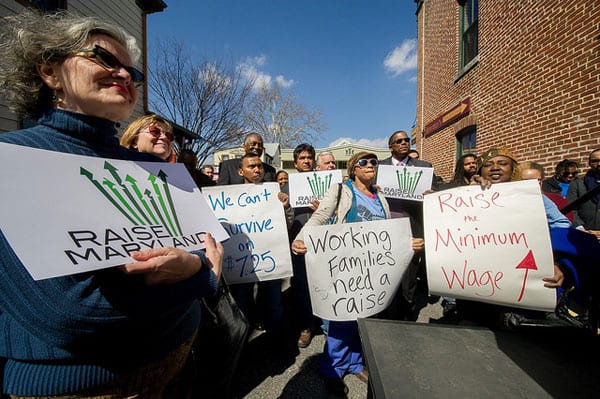
December 30, 2018; NPR, “Business” and the New York Times (Associated Press)
According to NPR, in 2019, 20 states and 21 cities will be raising their respective minimum wages. Increases range from a meager five cents per hour in Alaska to an additional $2.00 in New York City. In six states—namely, Arizona, Arkansas, Colorado, Maine, Missouri and Washington— these increases are the results of voter initiatives. Six states passed increases legislatively, and another eight have previously scheduled inflation adjustments.
The Economic Policy Institute has calculated that this will raise wages for low-income workers overall by approximately $5.4 billion for a total of 5.3 million workers. According to the Bureau of Labor Statistics, this works out to three percent of the 162.7 million Americans in the workforce. Beyond that, many more workers benefit due to a ripple effect, as companies often raise wages for those earning higher amounts when the minimum wage goes up.
The nonprofit sector is also affected in two primary ways. First, since many nonprofits work in low-income communities, a rise in the minimum wage can help the very people that many nonprofits are seeking to help. On the other hand, nonprofits are also employers, which means that for some nonprofits, a higher minimum wage means higher labor costs.
It is not uncommon, as a result, for nonprofits to resist minimum wage increases. A few years ago, NPQ’s Rick Cohen reported that James Head, president of the East Bay Community Foundation (located in Oakland, California), said that foundations are “all over the place” on the issue of a higher minimum wage. CalNonprofits executive director Jan Masaoka told NPQ back in 2015, “Foundation folk quietly support minimum wage increases but they seldom fund efforts to raise it, and they virtually never help their grantees with the transition and the huge budget increases it entails.”
Sign up for our free newsletters
Subscribe to NPQ's newsletters to have our top stories delivered directly to your inbox.
By signing up, you agree to our privacy policy and terms of use, and to receive messages from NPQ and our partners.
While funders may need to increase the size of their grants, and nonprofits may need to support higher labor costs per worker, as NPQ has regularly argued, the idea that you can sustainably support services off of low wages is deeply flawed. Indeed, sectors like home health care and childcare are known for having highly unstable workforces, because compensation is too low. For instance, last week, NPQ’s Martin Levine quoted Marcy Whitebook, co-director of the University of California, Berkeley’s Center for the Study of Child Care Employment, who noted that “child care workers in the US make less than parking lot attendants and dog-walkers” and that “the economics of early childhood in the United States are quite broken.” Home health care is marked by similar dysfunction.
As NPQ’s Ruth McCambridge observed in 2016 in an article on nonprofit wage ghettoes, “Advocating for expansion of necessary services without advocating for a living wage for the workforce needed for such an expansion…is inexcusable and entirely counterproductive, in that it does not cleave to the value set that distinguishes nonprofits in the highly sensitive and growing fields in which wage poverty is almost a given.” McCambridge noted, too, that women—and especially women of color—are by far the most likely to end up in these low-wage positions.
Of course, raising the minimum wage itself will not resolve these dilemmas; at best, it buys some time to begin to improve the conditions that create depressed wages. Building more sustainable wages often requires structural change, which might come from political advocacy—for example, advocating for higher reimbursement rates on state government contracts—or from developing new business models, such as worker cooperatives, in which workers have greater control over pay and scheduling.
Still, raising the floor does help some, with an estimated 5.3 million workers expected to get an average raise of over $1,000 a year. Given that the federal minimum wage, adjusted for inflation, is 9.6 percent lower than it was in 2009, every penny helps.—Steve Dubb and Moshe Hecht












